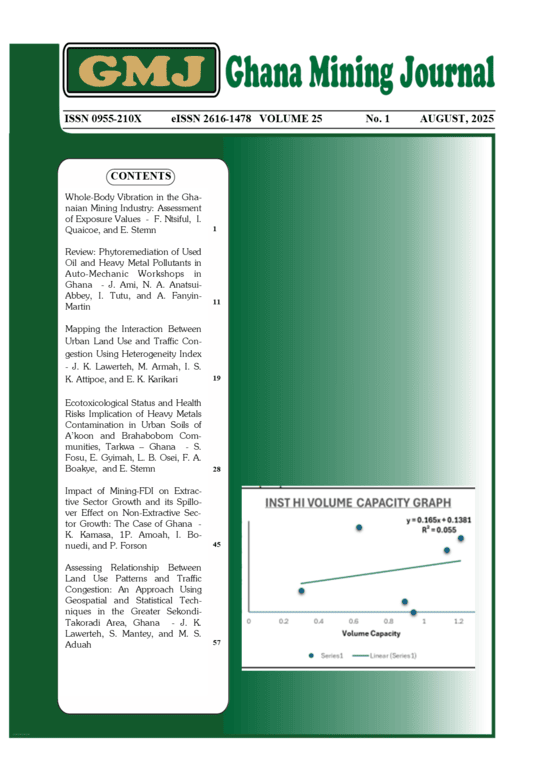Whole-body Vibration in the Ghanaian Mining Industry: Assessment of Exposure Values
Abstract
Although whole-body vibration (WBV) exposures have been recognised as a major occupational hazard in the mining industry, empirical studies in Ghana remain narrow, unlike other developed mining countries, where WBV exposures have been extensively studied. Studies like this remain relevant in the Ghanaian mining industry, considering reports of using obsolete equipment regarded as having high WBV exposure values. Thus, the study is justified and sought to assess WBV exposures in the Ghanaian mining industry to determine if they are comparable to those reported in the literature. Data was collected across three large-scale mines, two of them entirely surface mines and the other having both surface and underground operations using an iOS application installed on multiple 5th-generation iPod Touch devices. Overall, 169 exposure values were recorded across five surface and underground mine equipment and assessed according to ISO 2631-1. A comparison of the root mean square (rms) and vibration dose value (VDV(8)) with those reported in the literature revealed that WBV exposures in the Ghanaian mining industry are relatively higher. This suggests that WBV exposures are significant in Ghanaian mines and deserve greater focus. One-way ANOVA showed that the exposure value of the five equipment differs significantly, and post hoc tests revealed where statistically significant differences existed. Specifically, LHD vehicles consistently had the highest vibration levels, followed by haul trucks and excavators. The study presents some basis for a more targeted focus on WBV management, and this has been discussed throughout the paper
Downloads
Published
Issue
Section
License
Copyright (c) 2025 Florence Ntsiful, Ishmael Quaicoe, Eric Stemn

This work is licensed under a Creative Commons Attribution 4.0 International License.
Copyright © 2021 University of Mines and Technology (UMaT), Tarkwa. Ghana

